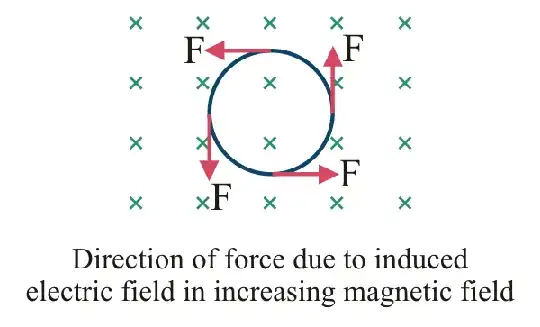When we bring a magnet towards a coil, a current is induced. As the magnetic field is generated around the coil and there is interaction of the magnetic field lines with the external field, energy is stored in the field (similar to electric field lines). As soon as we stop moving the magnet, the field goes away. Where does the stored energy go?
3 Answers
If the coil is superconducting the current is still there after you stop moving the magnet. In a normal-metal coil the current dies away due to the coil's resistance, and the extra energy is dissipated as heat.
- 58,971
- 4
- 53
- 158
When the magnet is brought closer to the the coil , magnetic field due to the magnet in the region of the coil changes with time and this gives rise to an electric field or an electric field is induced in that region . This induced electric field applies force on the electrons inside the coil and they start moving which gives rise to electric current and thus they create their own magnetic field.
Now let's see this from the perspective of energy : the moving magnet was the source of energy in the region of the coil and this energy was stored in the form of induced electric field . Those electric field lines transferred their energy to the electrons for moving them around the coil (since the induced electric field as shown in fig does a net work on them since the angle between the force and displacement is zero here. )

The energy which electrons get is mainly released in the form of heat due to the resistance of the coil and very little amount of the energy is in the form of induced magnetic field. So when the magnet stops moving the energy supply to that region stops and all of the energy gets used up by the electrons of which major part is released to the environment due to resistance and since the induced magnetic field disappears and energy can't be destroyed then this means that all of the energy is dissipated in the environment .
- 8,944
- 2
- 32
- 90
Let us say that a gap:- called a always open switch :- Is constructed as two hollow electrodes:- each electrodes holds back say 250 bar of water H2O. Now to also hold back the laws of the conservation of energy our complete circuit is now set up as super conducting:- this will exclude the mechanism that drives the 2 pole superconductive shuttle, as it shoots through the the superconductive solenoid/inductance. [ this is set up as SC, but relies on the SC shuttle to induce the emf in the inductance] How dose my IPR on The S.P.G. application 2300958.2 19 Jan 2023 work with the above? Simple :- as the shuttle has control time inside the inductance, then the outrush induce current will appear as a protentional at the gap . In the control of the shuttle as it must exit the inductance completely, before it re-enters so that the shuttle cycle can be completed at high speed and fully controllable. Now back to the crude timing of the 2 X 250 water H20 bar pressure that will collide head on in the core of the pancake flywheel turbine ref old IPR on the S.P.F.T. engine application 2216772.0 10 Nov 2022. each hollow electrode will be sealed with a fusible plug. it is the out rush high current/ plasma that will allow the 500 bar water H2O pressure to be converted to a hot burning plasma of Hydrogen Gas oxidise by Ozone gas. Only time will tell if my IPR holds Water H2O......
- 1